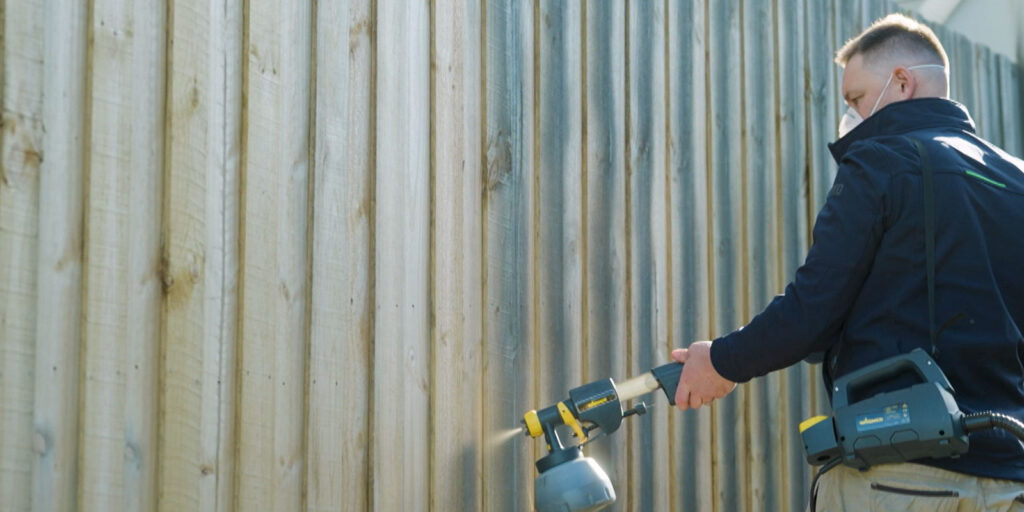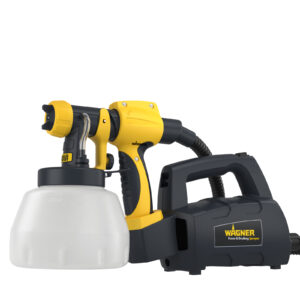How to paint a wooden fence
When deciding whether to paint or spray your fence, many do-it-yourselfers find themselves pondering this question: Should I use a brush, roller, or spray? Our recommendation is clear: if your wooden fence needs a fresh coat, spraying offers significant advantages.
Spraying is not only faster, but it also provides a more thorough coating. The paint penetrates deep into the cracks and grooves of the wood, ensuring better coverage. Additionally, the application is much more uniform, eliminating the brush marks that can occur with traditional painting methods.
This even application reduces the exposed surface area that is vulnerable to the elements, allowing the coating to protect your fence for a longer period.

Here's what you need to get started
Item 1. Pick a sprayer – here’s what we recommend
Item 2. Wire brush or broom
Item 3. Drop cloths (you can find a full list here)
Item 4. An exterior paint
Now you've got all the equipment needed
Step 1 - Clean the fence

Before painting, it’s important to remove any peeling or flaking paint. A broom is useful for this task, as it helps you avoid bending down. For tougher areas, a wire brush can be effective. Be sure to clean all the dirt off the fence thoroughly to ensure that the new paint adheres properly to the surface.
Step 2 - Cover the working area

To protect the areas beneath the fence, cover them thoroughly with materials such as drop cloths or old cardboard. Ensure that the covering is secure and lays flat on the ground, preventing it from fluttering due to the spray jet. If necessary, you can use masking tape to hold the covering material in place.
Step 3 - Prepare the paint and the sprayer

Start by thoroughly stirring the paint and, if necessary, dilute it according to the manufacturer’s instructions. Next, pour the paint into the container of the paint sprayer. To do this, set the switch to the “prime” position and turn on the unit. Once you see the paint flowing through the return hose, the sprayer is ready to use. Simply switch the setting to “SPRAY.”
Before you begin spraying your project, it’s a good idea to perform a test spray to check if any adjustments are needed. You can use an old cardboard box or spray on the back of a fence for this test. For detailed instructions on adjusting the settings of your airless sprayer, refer to the enclosed operating instructions or our product videos.
If your using the fence and deck sprayer – simply just pour the paint into the pot and adjust your paint flow settings. Test your settings out before applying paint to the fence.
Step 4 - Spraying time

Now it’s time for the spraying! Spray at a steady pace and at a distance of about 25-30 cm from the fence for airless and 5-15cm for the fence and decking sprayer. Overlap the paint strips slightly so that the coating becomes uniform and even.
The spraying technique enables the paint to be applied in any gaps in the fence. It is also helpful to work in a cross coat technique on uneven surfaces – i.e. first paint from left to right and then from top to bottom or vice versa. The wide paint jet can be adapted to your working direction – simply turn the nozzle holder on the front of the gun.
Use a piece of cardboard at the top of the fence to prevent any overspray from coating unwanted surfaces.

 AUD
AUD  NZD
NZD


